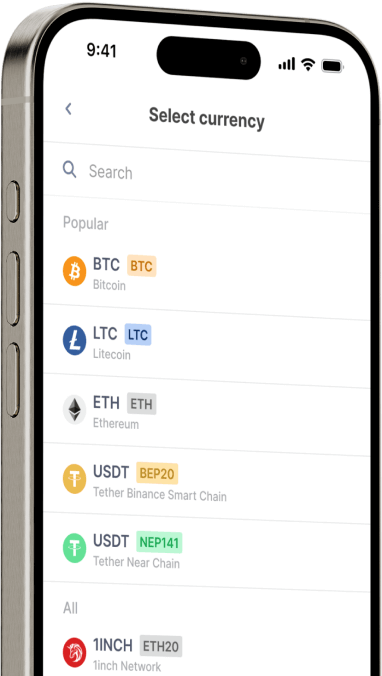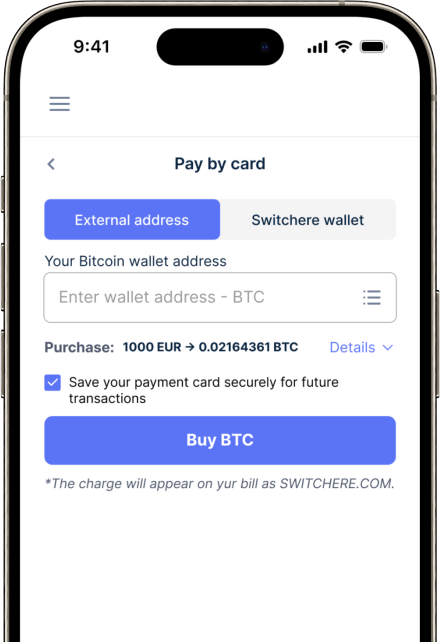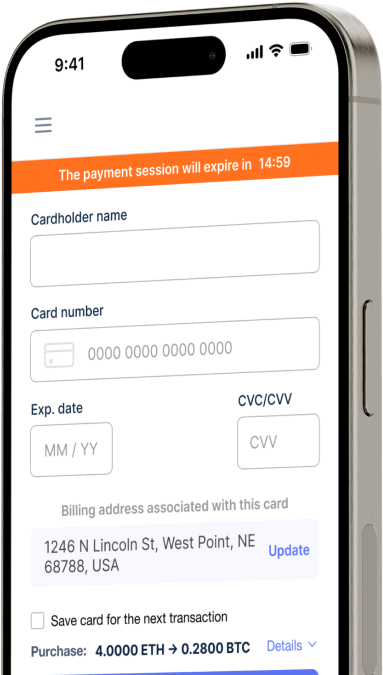Convert
Ukrainian Hryvnia (UAH) to Bancor Network (BNT) Instantly
Purchase Bancor Network (BNT) with Ukrainian Hryvnia (UAH) easily at Switchere and benefit from fast, secure transactions.
About
Bancor Network (BNT)
Bancor Network is a foundational decentralized finance (DeFi) protocol that enables automated, on-chain trading of digital assets. As one of the original automated market makers (AMMs), its primary mission is to solve a critical issue for liquidity providers (LPs): impermanent loss. This on-chain liquidity protocol utilizes a system of smart contracts to allow for peer-to-peer token swaps without traditional order books, aiming to provide deeper and more sustainable liquidity within the DeFi ecosystem. The network’s tokenomics are specifically designed to incentivize participation while protecting capital from the volatility inherent in standard AMM liquidity pools.
The core innovation of Bancor is its unique architecture featuring single-sided liquidity provision and Impermanent Loss Protection (ILP). Unlike typical AMMs that require LPs to deposit a pair of assets, Bancor allows users to stake a single token. The protocol achieves this through its native BNT utility token, which has an elastic supply. When a user provides a single asset, the protocol co-invests its own BNT to create the pool pair. This mechanism, funded by protocol fees, is what powers the ILP, compensating LPs for potential divergence loss over time and making yield farming more predictable. This structure is a key differentiator in the crowded decentralized exchange (DEX) space.
The Bancor Network Token (BNT) is central to the ecosystem’s function, serving as the common reserve asset in every liquidity pool. As a governance token, BNT holders can participate in the BancorDAO, voting on key protocol upgrades and parameter changes. Staking BNT not only secures the network but also grants users a share of the trading fees generated by the protocol. With advancements like Bancor v3, the protocol continues to refine its model for capital efficiency, solidifying its position as a pioneering force in sustainable on-chain liquidity solutions.
Buy Other 150+ Cryptocurrencies for Ukrainian Hryvnia (UAH)
Other Coins for Ukrainian Hryvnia (UAH)
-
UAH to ZRX
-
UAH to 1INCH
-
UAH to AAVE
-
UAH to ACH
-
UAH to ALGO
-
UAH to TLM
-
UAH to ANKR
-
UAH to APE
-
UAH to NFT
-
UAH to API3
-
UAH to APT
-
UAH to ARPA
-
UAH to AUDIO
-
UAH to AVAX
-
UAH to AVAX
-
UAH to AXS
-
UAH to BADGER
-
UAH to BAL
-
UAH to BNT
-
UAH to BAT
-
UAH to BNB
-
UAH to BSW
-
UAH to BSV
-
UAH to BLUR
-
UAH to BONE
-
UAH to CTSI
-
UAH to CELR
-
UAH to CELO
-
UAH to CEL
-
UAH to LINK
-
UAH to CHZ
-
UAH to CHR
-
UAH to C98
-
UAH to COMP
-
UAH to CFX
-
UAH to PEOPLE
-
UAH to CVX
-
UAH to ATOM
-
UAH to CTC
-
UAH to CRV
-
UAH to DAI
-
UAH to DASH
-
UAH to MANA
-
UAH to DENT
-
UAH to DGB
-
UAH to DYDX
-
UAH to XEC
-
UAH to EOS
-
UAH to ETC
-
UAH to ENS
-
UAH to ETHW
-
UAH to FET
-
UAH to FIL
-
UAH to FLOKI
-
UAH to GALA
-
UAH to GNO
-
UAH to ONE
-
UAH to HBAR
-
UAH to HOT
-
UAH to HOOK
-
UAH to ICX
-
UAH to ILV
-
UAH to IMX
-
UAH to INJ
-
UAH to ICP
-
UAH to IOST
-
UAH to IOTX
-
UAH to JASMY
-
UAH to JST
-
UAH to KAVA
-
UAH to KCS
-
UAH to KSM
-
UAH to KNC
-
UAH to LDO
-
UAH to LQTY
-
UAH to LPT
-
UAH to LOOKS
-
UAH to LRC
-
UAH to LUNA
-
UAH to MKR
-
UAH to MASK
-
UAH to EGLD
-
UAH to ALICE
-
UAH to NEAR
-
UAH to XEM
-
UAH to NEXO
-
UAH to NOT
-
UAH to NMR
-
UAH to OKB
-
UAH to OMG
-
UAH to ONT
-
UAH to EDU
-
UAH to OP
-
UAH to OGN
-
UAH to CAKE
-
UAH to PAXG
-
UAH to PENDLE
-
UAH to DOT
-
UAH to POL
-
UAH to QTUM
-
UAH to QNT
-
UAH to RDNT
-
UAH to XRD
-
UAH to RVN
-
UAH to REN
-
UAH to RSR
-
UAH to RLC
-
UAH to RPL
-
UAH to SFP
-
UAH to SHIB
-
UAH to SKL
-
UAH to SXP
-
UAH to STND
-
UAH to STG
-
UAH to XLM
-
UAH to GMT
-
UAH to STORJ
-
UAH to STMX
-
UAH to SUSHI
-
UAH to SNX
-
UAH to USDT (Polygon)
-
UAH to USDT (AVAC)
-
UAH to USDT (BEP20)
-
UAH to USDT (ERC20)
-
UAH to USDT (SPL)
-
UAH to USDT (NEP141)
-
UAH to USDT (FA2)
-
UAH to USDT (TRC20)
-
UAH to USDT (JETTON)
-
UAH to XTZ
-
UAH to GRT
-
UAH to SAND
-
UAH to TFUEL
-
UAH to THETA
-
UAH to RUNE
-
UAH to TON
-
UAH to TUSD (BEP20)
-
UAH to TUSD (TRC20)
-
UAH to TWT
-
UAH to UOS
-
UAH to UMA
-
UAH to UNI
-
UAH to USDC (Polygon)
-
UAH to USDC (SPL)
-
UAH to USDC (OP)
-
UAH to USDC (BEP20)
-
UAH to USDC (AVAC)
-
UAH to USDC (ARB)
-
UAH to USDC (ERC20)
-
UAH to VET
-
UAH to VRA
-
UAH to WAXP
-
UAH to WOO
-
UAH to WLD
-
UAH to WBTC
-
UAH to WMINIMA
-
UAH to XDC
-
UAH to YFI
-
UAH to YGG
-
UAH to ZIL
How to Buy Bancor Network (BNT)
Frequently Asked Questions
-
What are the common methods for purchasing Bancor Network Token (BNT) with Ukrainian Hryvnia (UAH)?
Typically, you would use a cryptocurrency exchange that serves Ukraine as a fiat on-ramp. The process usually involves creating an account, completing KYC/AML verification, and then depositing UAH via a Ukrainian bank card (like Visa/Mastercard) or local payment systems such as Privat24 or Monobank. Often, you might need to first buy a major cryptocurrency like USDT or ETH with your UAH, and then trade it for BNT on the exchange's market.
-
Are direct UAH/BNT trading pairs common, or is a multi-step trade necessary?
Direct UAH/BNT trading pairs are not common on most cryptocurrency exchanges. The standard procedure involves a multi-step trade. Users typically convert their Ukrainian Hryvnia (UAH) into a high-liquidity asset like a stablecoin (USDT) or a major cryptocurrency (BTC, ETH) first. Subsequently, they use that asset to trade for BNT on a market that supports the BNT pair, which provides better liquidity and price discovery.
-
What is the function of BNT staking after acquiring the token?
BNT staking is integral to the Bancor protocol. By staking BNT, holders can participate in liquidity mining programs to earn rewards generated from trading fees across the network. It also allows participation in the Bancor DAO (Decentralized Autonomous Organization), giving stakers voting rights on protocol upgrades and parameter changes. Staking contributes to the protocol-owned liquidity model, enhancing the overall stability and efficiency of the AMM.
-
What technical advantage does Bancor's AMM offer after acquiring BNT with fiat currency?
Bancor's primary technical innovation is its Automated Market Maker (AMM) design, particularly in Bancor v3, which offers single-sided liquidity provision and impermanent loss protection. After buying BNT with UAH, you can deposit only your BNT into a liquidity pool without needing a pair asset. The protocol then co-invests its protocol-owned liquidity, protecting your stake from the divergence loss commonly found in other AMMs, which is a significant advantage for liquidity providers.
-
What are the typical fees when using UAH to purchase BNT?
There are several potential fees. First, a deposit fee for funding your exchange account with UAH, which varies by payment method (e.g., bank card vs. transfer). Second, a trading fee on the exchange when you convert UAH to another crypto and then that crypto to BNT. Finally, if you move your BNT to a non-custodial digital wallet, you will pay a blockchain transaction fee (gas fee), which is determined by network congestion on the Ethereum blockchain where BNT operates.
-
How can I securely store my BNT tokens after a UAH purchase?
For maximum security, it's recommended to transfer your BNT from the exchange to a non-custodial digital wallet where you control the private keys. Options include browser-based wallets like MetaMask for interacting with DeFi protocols like Bancor, or hardware wallets (e.g., Ledger, Trezor) for the highest level of security via cold storage. Always back up your seed phrase offline and never share it.




